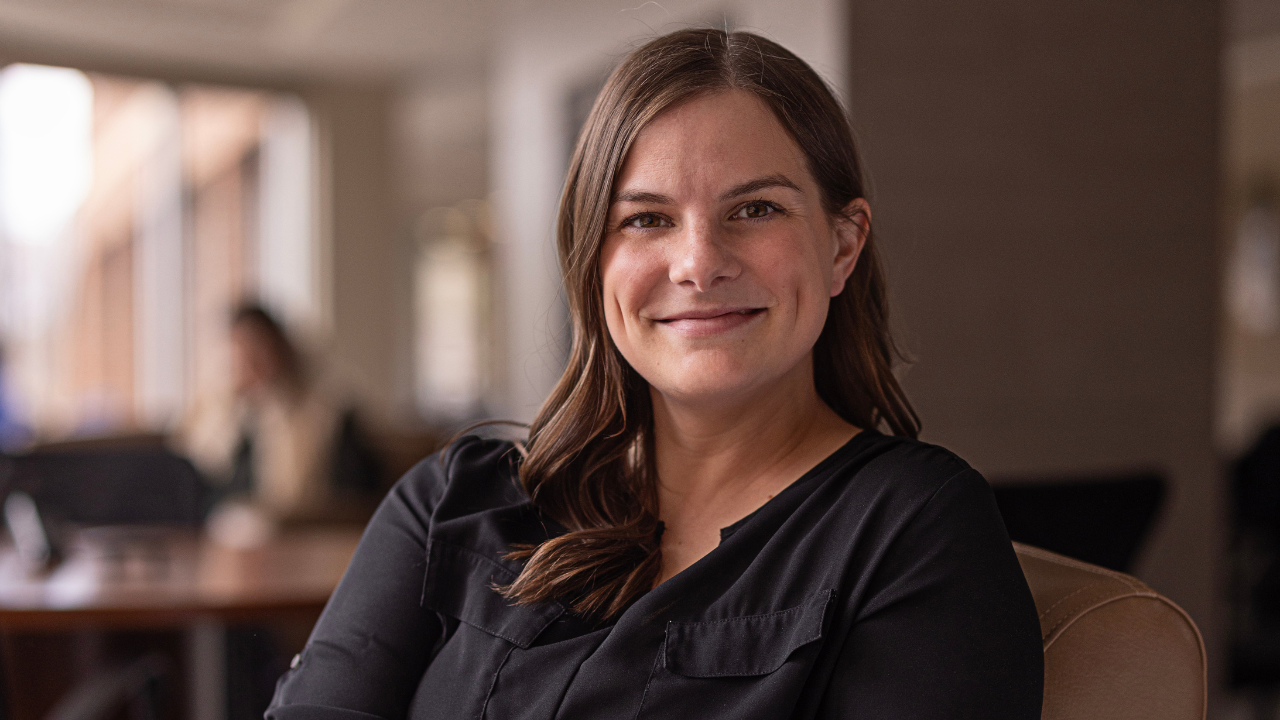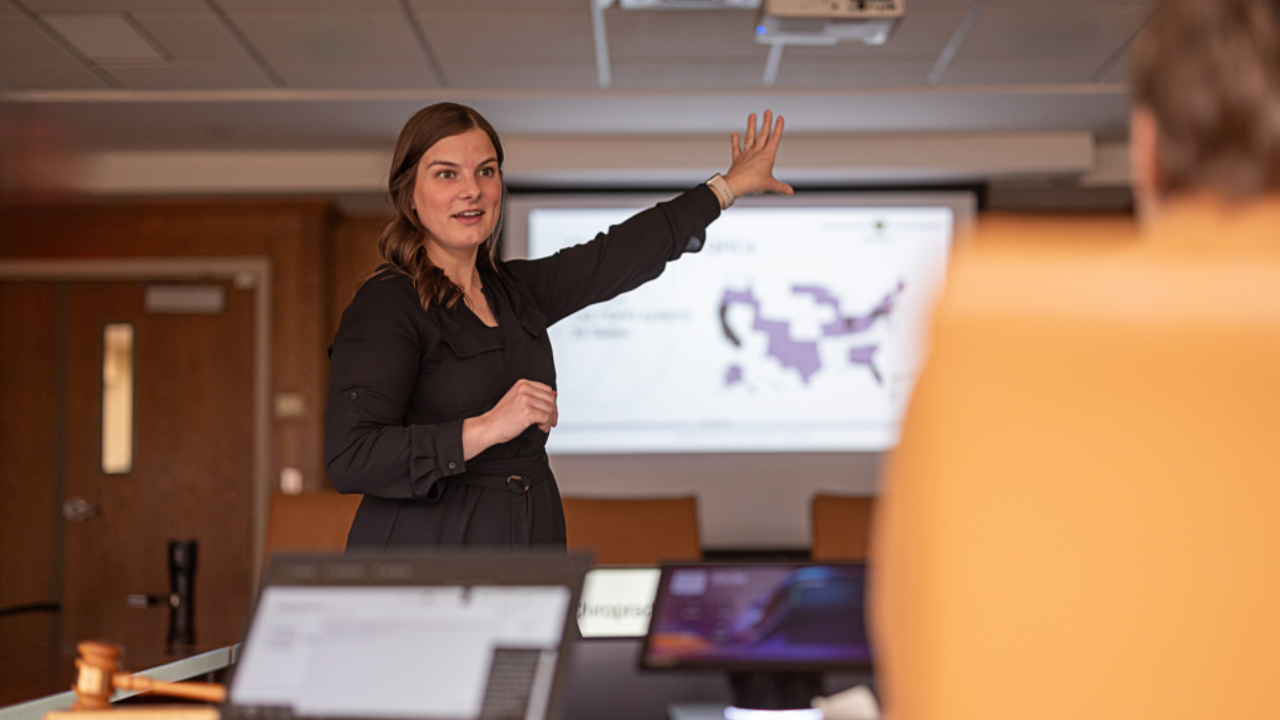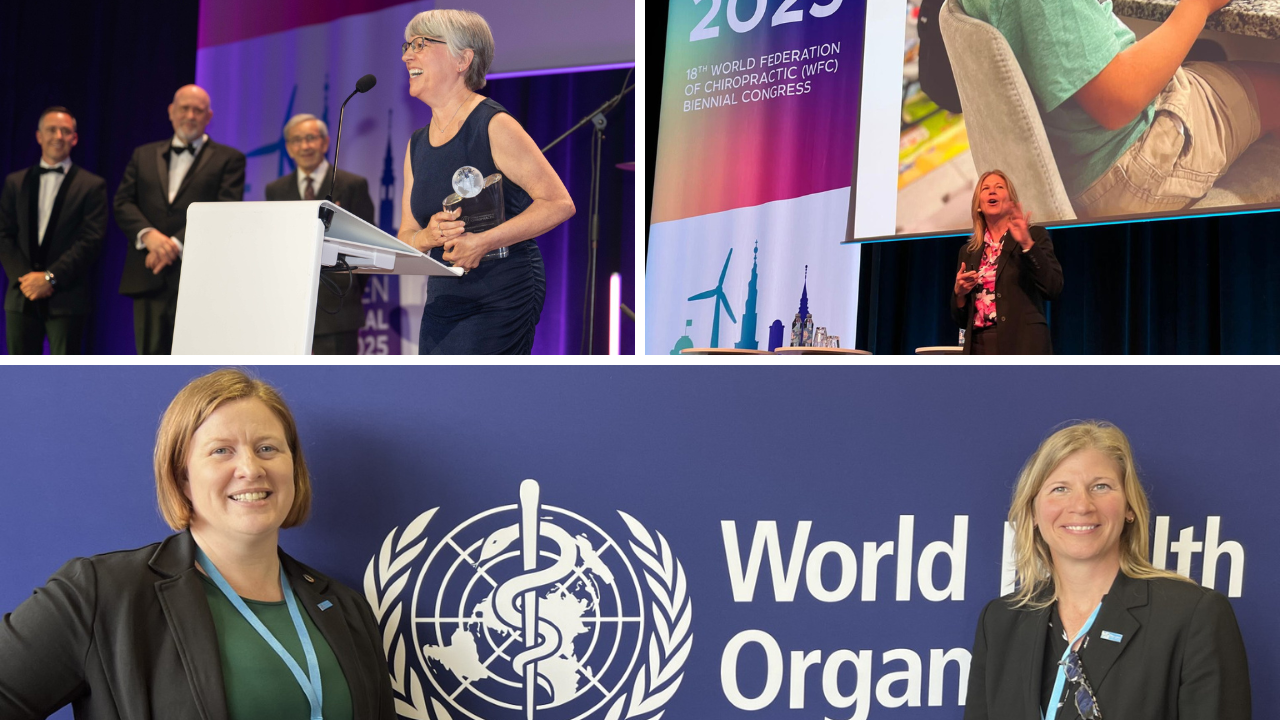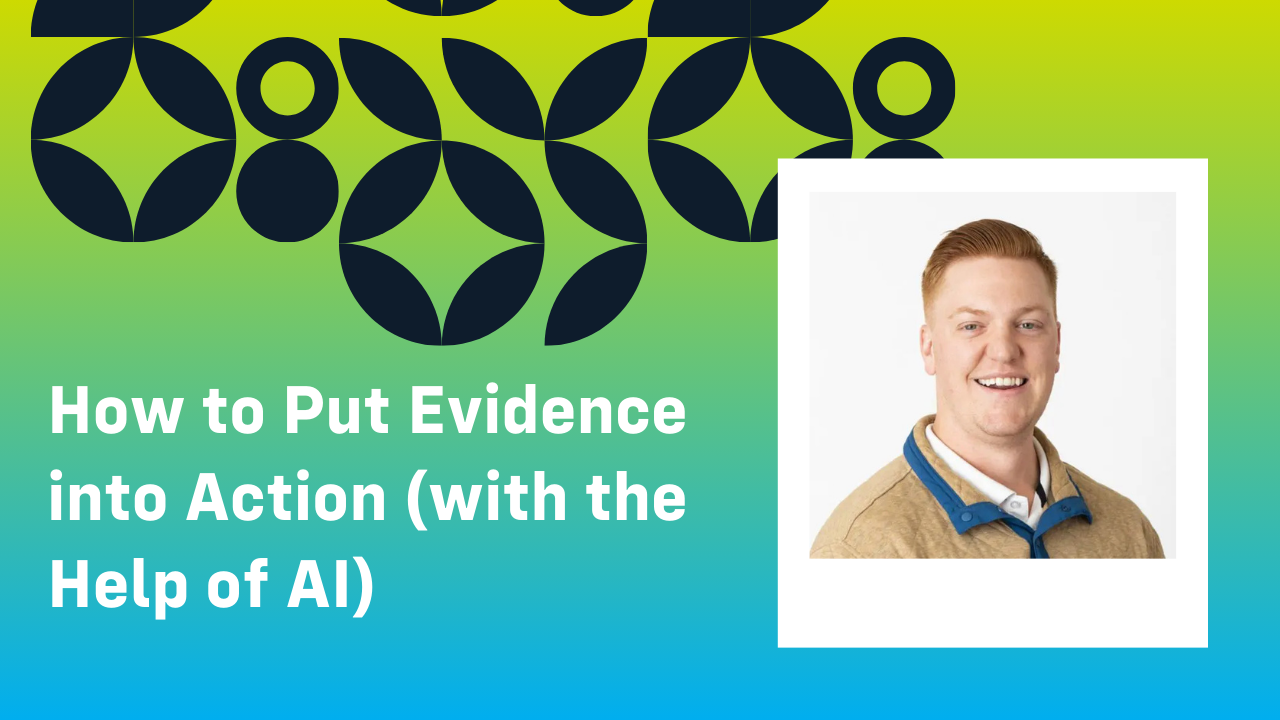Chiropractic Career in Research with an Eye Towards Social Impact
Sometimes, winding paths are the best way to reach a destination. For Andrea Albertson, DC, research and policy associate at NWHSU and RAND REACH scholar for early career research, this rings true. She’s built a chiropractic career in research by saying ‘yes’ to opportunities and keeping an open mind.
Choosing Chiropractic
As a kid in a family of medical professionals, Dr. Albertson remembers helping her mom study for nursing school. She joined the Health Occupation Students of America club at school and assumed she’d be an orthopedic surgeon someday. However, she ended up getting a job in a small chiropractic office, and noticed that it felt different than the other medical practices she’d been in. “I really enjoyed going into work because people were always happy to come in. Even when they were in pain.”
She hadn’t even considered chiropractic as a career until the chiropractor she worked for brought it up. She said ‘yes.’
Dr. Albertson took the pre-reqs for chiropractic school and enrolled at NWHSU, but kept her mind open about the future. “Something my mom told me really young was ‘the job you will want or end up with probably doesn’t exist right now. So keep open to possibilities. Say yes. And be flexible,’” she shared. “I knew it was going to fit somehow, but I didn’t quite know where.”
An Early Chiropractic Career in Interdisciplinary Clinics
After graduating, Dr. Albertson had great opportunities to work in interdisciplinary clinics around the country, collaborating with other medical professionals and treating complex conditions.
She graduated early because she had a job lined up in a hospital-based setting in Kansas City covering another chiropractor’s maternity leave. Dr. Albertson graduated March 14, and the baby was born March 17. She loved it. “It was really exciting to be in that interdisciplinary space. I enjoyed the medical aspect.”
When that opportunity ended, a new job opened in Plano, Texas in a hospital-based pain and wellness center. She didn’t know anyone in Texas, but again, she said ‘yes.’ There, she worked alongside nurse practitioners and a medical doctor, running the chiropractic portion of the clinic. She also wrote about chiropractic for their blog and expressed interest in research.
Then, at the onset of the pandemic, she moved back to Minnesota, originally working in a small private practice. However, she quickly learned that wasn’t for her, and she took a job as a medical evaluator for an organ, tissue, and eye donation organization. While this may seem like a strange pivot, it helped her gain skills combing through medical records and synthesizing things quickly.
It also reaffirmed her interest in social justice. “I saw a lot of healthcare disparities working in that space,” she explained. “Reviewing medical records and seeing the burden of chronic disease, I think it really humbled me and gave me a good appreciation for the work. I was ready to get back into the chiropractic field, and then Dr. Maiers called me.”
Pivoting to a Chiropractic Career in Research
Over the years, Dr. Albertson had stayed in touch with mentor Michele Maiers, DC, PhD, MPH ‘00, whose prolific research career has been devoted to impacting health policy.
“I would say I’m a Maiers-raised researcher. The policymakers value research. They want data. They love the heartstrings, the stories that get them to remember, but it’s hard to inform other people down the line without having some data,” she shared.
The goal is impacting policy, especially for individuals who are medically underserved.”
In 2022, Dr. Maiers offered her a job on the research and policy team, and since then her research career has exploded. Dr. Albertson’s research focuses on community health clinics and underserved populations: including authoring research on chiropractors working in U.S. Federally Qualified Health Centers and utilization of chiropractic services among older adults with spine pain at a publicly funded healthcare facility in Canada. She presents her work around the country at conferences, and receives accolades for the work, but for her, it’s about the social impact.
Her path before entering the research field very much informs her passion. “Part of where my journey has taken me so far is being able to shine a light on populations that have gone unnoticed or unrecognized within research. A lot of that determination comes from seeing disparities in my work,” she explained.
Care management for pain patients is often disjointed and uncoordinated. Patients get bounced from office to office, and they’re frustrated. It’s hard on the patient and their entire family.”
I want to say there’s a lack of options, but it’s almost like there are so many options, but there isn’t good, stepwise care. Pain patients get kicked around a lot. They’re frustrated, and it takes a heavy hit on their family life too.”
What Does a Chiropractic Career in Research Look Like?
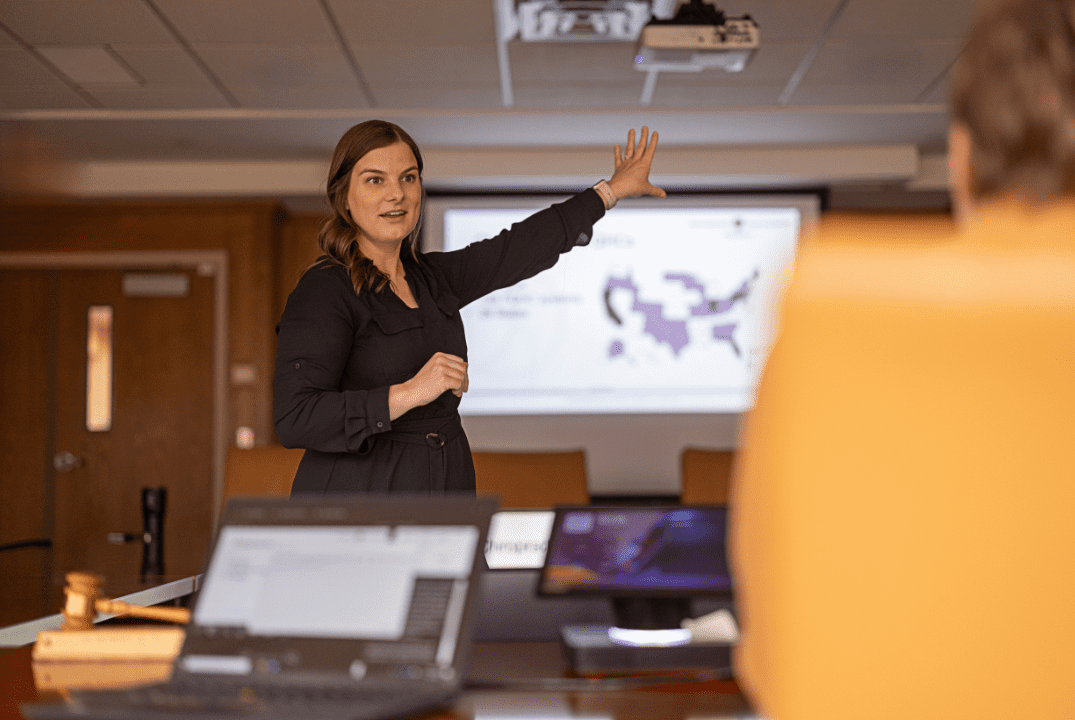
“There’s usually a project in its early infancy, workshopping. Then there’s one that’s getting off the ground, maybe you’re collecting data. And then there’s usually one you’re finishing or starting to present,” she explained. “Now, I’m getting to the point where they all follow the same theme, so the work builds on itself.”
Policy is also a major part of her work, and she spends time communicating with legislators and advocating, as well as mobilizing others to do the same. Beyond her role at NWHSU and her RAND REACH scholar position, she serves as second vice president in the Minnesota Chiropractic Association, and Minnesota alternate delegate for the American Chiropractic Association.
“It’s little sprinkles of madness here and there.” she laughed. “No day is the same, which is exciting.”
Valuing the Winding Path
Recently, Dr. Albertson’s mom asked if she thought she’d do anything differently if she were to start over again. “I said no, because your perspective changes depending on the experiences you’ve gone through,” she said. Her mom then reminded her that after Hurricane Katrina hit, their church did a clothing drive for the victims.
Dr. Albertson created flyers, brought them around the neighborhood, and offered to pick-up donations—filling the car to the brim. “I didn’t think of it as anything special, but my mom said, ‘that’s activism,’” reflected Dr. Albertson. “Social activism was always something I got excited about, and with the work we’ve done now, it’s such a sweet balance of research informing policy and policy informing research. It brings me back to those roots. So, to make a career out of that is pretty exciting.”
Advice for People Interested in a Chiropractic Career in Research
If you’re considering chiropractic school and are interested in research, be sure to choose a school with an active research department. Then get involved. “One of the reasons I chose NWHSU was because of the track record in publications and scholarly activity. So, it feels very full circle,” said Dr. Albertson.
She also recommends getting involved in research, even as a participant, and prioritizing reading papers. “Subscribe to journals, get the email alerts when they come out and set the keywords you’re interested in. Make it a habit: something like ‘every Thursday morning with my coffee I’m going to read these papers.”
As a student, join organizations like the Sports Council or Student American Chiropractic Association—which give you opportunities to build your own projects and present at conferences. “Also, saying yes to opportunities,” concluded Dr. Albertson. “Even if it’s something you’re not quite sure you want to study, just being involved and seeing how it all plays out is really valuable.”
